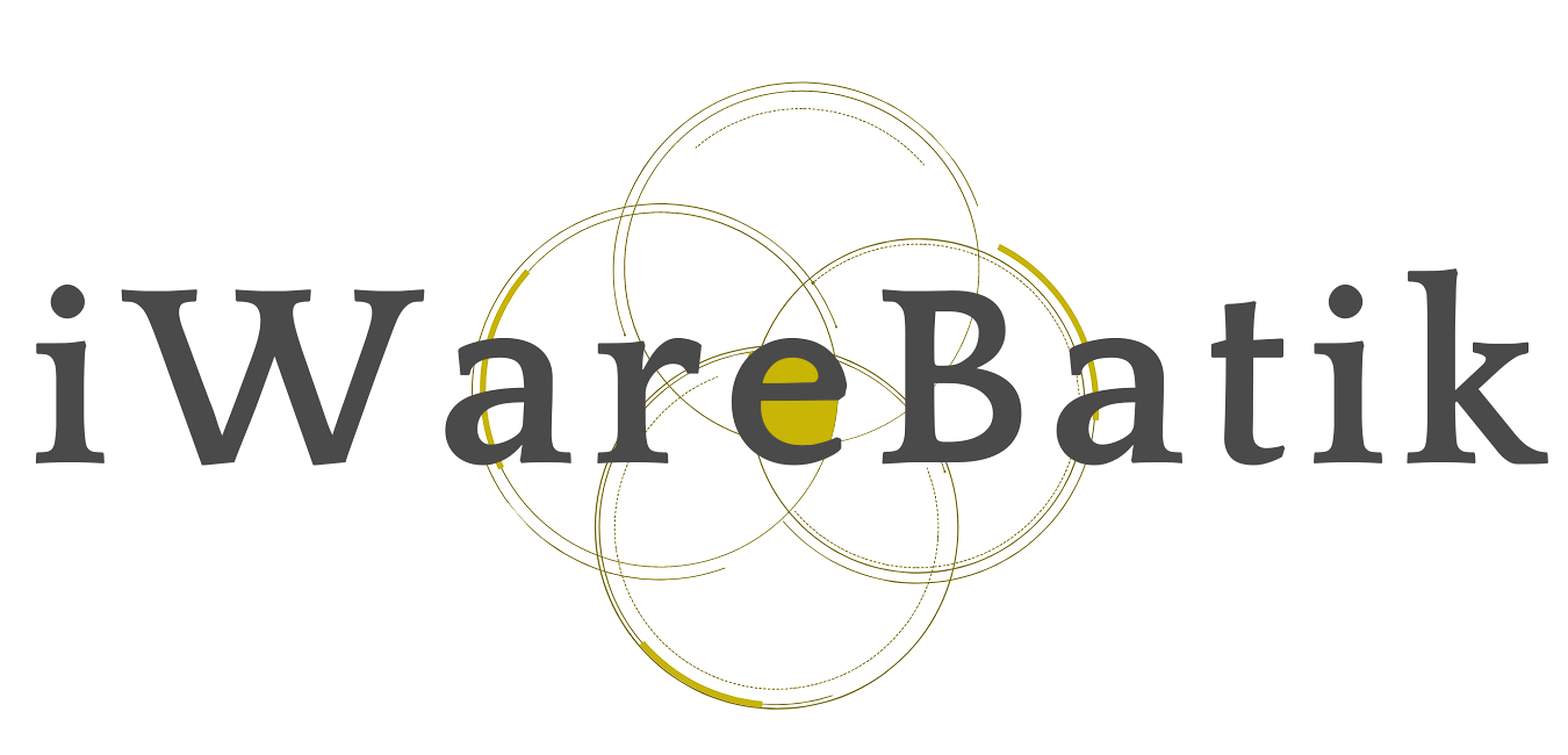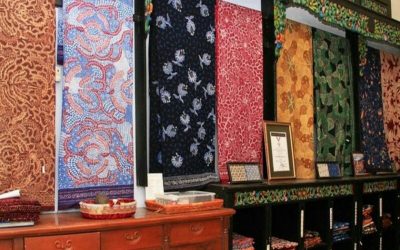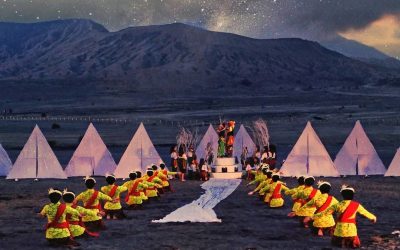Home / Batik Regions – Western Indonesia – Java Island – East Java / Surabaya City of Heroes
Cultural Destination
Embrace the spirit of the place!
Surabaya City of Heroes
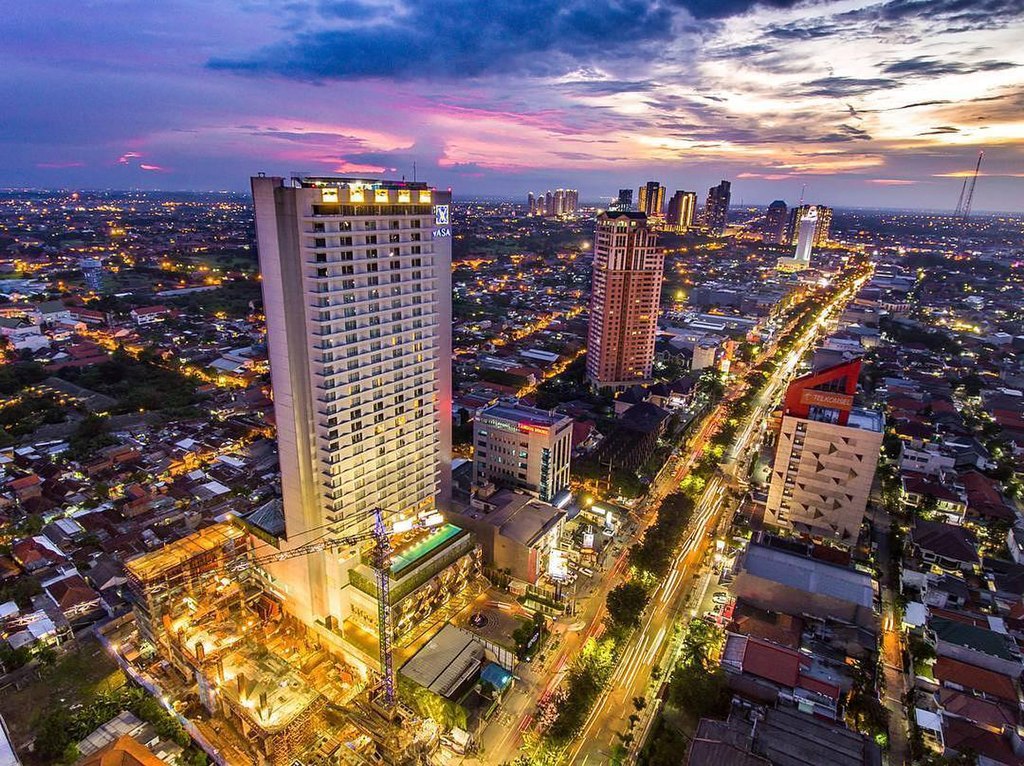
Surabaya Metropolitan Landscape (photo: Ivan Consigliere, Wikipedia)
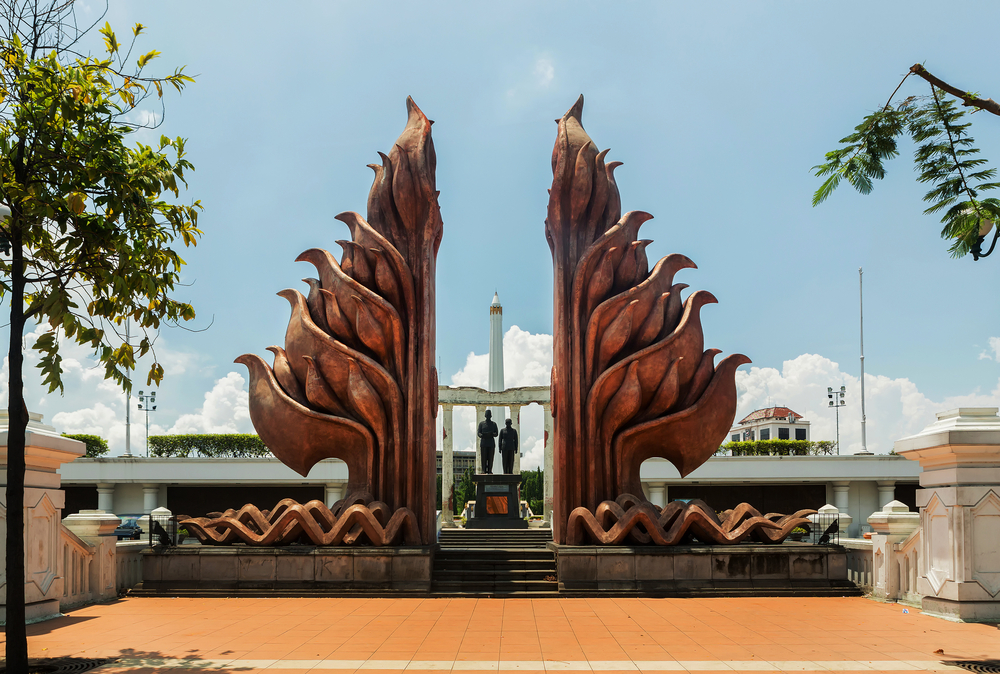
The Monument of Heroes (photo: Traveloka)
Surabaya City of Heroes
Surabaya is the capital of East Java province. It is a vibrant and active metropolis with a lot of history and traditions. Modern skyscrapers mingle with historic buildings from the time of Dutch colonization. This city is known as the “City of Heroes” in commemoration of the great struggle mounted by soldiers and civil fighters in the Great Battle against Dutch Colonialists on 10 November 1945. The city also has unique religious architectural heritages scattered in the city. In addition to the magnificent Buddhist and Hindu temples in the city center, you will find historical mosques that assimilate Chinese and Arabic architecture, such as the Cheng Ho Mosque and Ampel Denta Mosque.
Tourist Attractions in East Java
East Java House of Batik
Do you want to see all variants of Batik motifs in East Java?
Kasada Ceremony at Bromo Mountain
Kasada Ceremony is a traditional holiday of the Tengger tribe, which is
Trowulan – Majapahit Heritage Site
Rumor has it that after the death of a king or queen, many rites began to
East Java
Batik Motifs
Gedhog Kembang Waluh
a combination of Javanese cultural motif of the Majapahit kingdom (XII-XIV century) with
Sekar Jati
Sekar means flower and Jati refers to teak trees that symbolizes a strong mental character that
Discover
Indonesian
Batik
Motifs
Desa Na Tolu
The Desa Na Tolu characteristic pattern symbolizes the Batak philosophy of existence and
Jupri Kembang Teh
Kembang Teh illustrates the tendrils of tea plants that grow in the highlands of
Teguh Bersatu
This batik motif shows the strength of the people of Kupang. It also represents a sense of
Salakanagara
Salakanagara batik motif illustrates the first kingdom in the Betawi land
Kawung
The Kawung motif was created by Sultan Agung Hanyokrokusumo (1593 – 1645) as a symbolic gift for
Sero Tangga
The Sero Tangga illustrates an endearing feeling and sacrifices of a person to fulfil
Pattimura
Pattimura is the name of an Indonesian hero who fought against colonialism in
Rangkiang
The word “Rangkiang” refers to the rice granary in the Minangkabau language. It symbolizes
Kuda Kupang
Horses symbolize wealth. It contains noble values of virtuous characters that bring
Bale Lumbu
This motif signifies the welfare of the ancient Sasak society. Bale also symbolizes the
Pala Salawaku
This motif illustrates the unique weapons of the Maluku region, namely
Biji Kopi
The coffee seeds motif illustrates the pride of local coffee specialities in
Gonggong Siput
Gonggong (Strombus Turturella) is one type of sea snail found around
Gorga Simeol-Meol
The Gorga Simeol-meol is a pattern of plant tendrils. it is regarded as a symbol of longevity and
Lontara
The Lontara script itself is a typical ancient script of Bugis and Makassar communities. History records that
Paqbarre Allo
The word “Barre” means round and “Allo” means the sunlight. This motif is interpreted as
Keluak Daun Pakis
The word “Keluak” is a Minang language which means twisted or tangled. The Motif of
Burung Bidadari
Bidadari birds are endemic birds in Halmahera. This motif represents an
Ake Patra
Ake is related to the divinity and the composition of the universe. It is a symbol of
Parang Seling
Parang Seling or “alternating daggers” is a royal batik motif. It is a feminine variant of
Taiganja
Taiganja is a precious gold pendant that shows the social status of the Kaili family. It is
Raja Ampat
Raja Ampat motif represents the marine life at Raja Ampat archipelago in
Jumputan Bintang
The word Jumputan means the tie-dye technique, while the word “Bintang” refers to
Ukir Sentani
The Ukir motif is a batik motif that is inspired by various traditional Sentani wood carvings
Daun Sirih
This motif illustrates betel leaves that are used by Lombok communities as traditional
Dayak Taghol
Dayak Taghol has a distinctive style of four curved lines and small dots. This motif represents
Gonggong Beruntun
This motif illustrates that a person should maintain a positive attitude and
Karawo Mahkuta
Mahkuta refers to Gorontalo’s traditional crown. It represents noble characters of
Karawo Pinang
Pinang refers to the Palm areca tree. This motif is considered as the original
Lok Baintan Floating Market
As you can imagine, the most authentic thing is that you can buy things and even
Manguni Minahasa
Manguni is identified as the symbol of the Minahasa people. Manguni is known as a
Daun Simpor
This motif is inspired by the Simpor plant (Dillenia Suffruticosa) which is a typical
Kaganga Tanah Rejang
If Batik Besurek combines Arabic calligraphy motifs, then the Kaganga batik takes
Tabir Tanjung
Tanjung flower is a type of Cherry tree flower, which is commonly found in
Sekomandi
Its philosophical meaning is the eternal union which refers to a saying “until death do us part”
Sido Mulyo
Sidomulyo is one of the classical motifs, which is specifically used for the bride’s costume in
Tampuk Manggis Sasirangan
The motif illustrates the philosophy of the mangosteen fruit, which is
Dayak Kamang
Kamang motif is generally found in the Dayak tribe shield because it is believed to
Gajah Way Kambas
The motif illustrates the Lampung’s natural reserve, the Way Kambas. it also symbolizes
Merak Ngeram
The hatching peacock motif has a very deep meaning which refers to the sacrifice and
Bintik Tujuh
The Bintik Tujuh (Seven Dots) motif has 7 white spots and green color gradation as
Gumin Tambun
Based on Hindu mythology, this motif symbolizes lucks, abundant wealth, and
Bultiya
The word ‘Bultiya’ is an acronym of the three major tribes in North Kalimantan, namely
Sekar Jati
Sekar means flower and Jati refers to teak trees that symbolizes a strong mental character that
Kasih Tak Sampai
‘Kasih Tak Sampai’ is an idiom in the Indonesian language which refers to
Tifa Totobuang
The batik motifs illustrate Maluku’s traditional music instrument called
Pinawetengan
The Pinawetengan Batik pattern was taken from a prehistoric inscription in
Prada Papua
The word “Prada” in the Javanese-Indonesian dialect means a batik textile that
Awan Berarak
Awan Berarak is a combination of Dayak motifs and Malay patterns. The word ‘Awan Berarak’ means the
Srimanganti
The name of the Srimanganti motif is derived from Palace’s hallway that connects to
Pucuk Rebung Riau
Pucuk Rebung symbolizes heart determination in achieving goals, good luck, and
Lipaq Sabe
Lipaq Saqbe contains a simple geometric classical motif with various flower decorations. This textile is
Insang Ikan
Insang refers to the gills of the fish. This is a typical pattern of Malay ethnic who inhabits
Hiu Taliyasan
Indonesia is also home to the world’s largest fish, the whale shark (Rhincodon typus). Hiu Taliyasan refers to
Bomba Mawar
This motif means sacred love for family, kingdom, and God; It also illustrates
Gigi Haruan Lidi
The Gigi Haruan Lidi motif is taken from the name of the cork fish and is a symbol of
Mahkota Siger
Siger is the crown of a noblewoman in ancient time. It is a symbol of femininity, strength, and
Pohon Hayat (Tree of Life)
The Batik motifs in Lampung are dominated by the acculturation of Buddhist and
Singayaksa
The Singayaksa motif comes from the name of a place where Sultan Hasanuddin used to
Besurek Rembulan
This batik illustrates praise for God who created the wonderful universe
Tangerang Herang
Tangerang Herang motif is a symbol of Tangerang city. The Tangerang Herang batik motif consists of
Kain Cual
Cual textile tradition has existed since the 17th century. The word “Cual” refers to
Parang Rusak
Another meaning behind this motif is an unconquerable spirit, symbolized by
Besurek Rafflesia
The term “Basurek” refers to a textile that contains letters or inscriptions
Tongkonan
Toraja’s traditional house is called Tongkonan. Tongkonan is a place for
La Galigo
La Galigo is a literary work of the Buginese Epic that has 300 thousand epic lines. It is considered even
Wakatobi
It symbolizes the coastal beauty of the Wakatobi island and the symbol of Patra symbolizes
Daun Lada Hitam
The black pepper motif represents the main commodity of Bangka Belitung
Pati-Pati Pinehiku
It symbolizes the hierarchy in society and the social status of the Mekongga
Kerawang Tegak Aceh
The Vertical Upright (Kerawang Tegak) Motif symbolizes a person who has a strong
Cengkeh
The clove flower motif is the main commodity of the Tolitoli Regency. This motif represents
